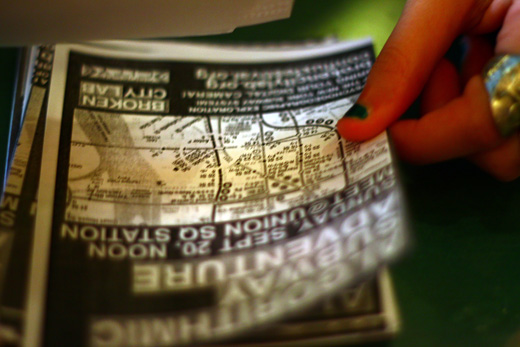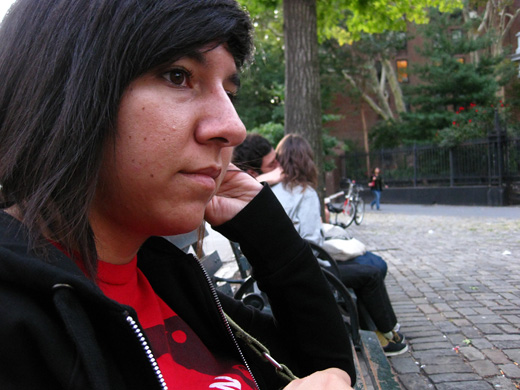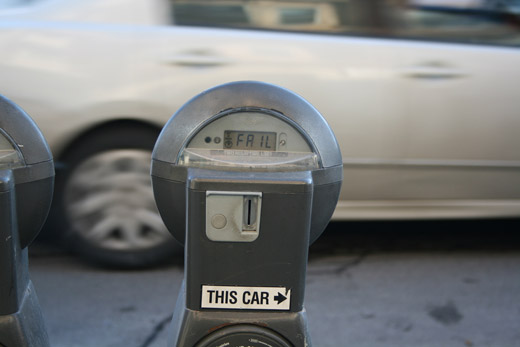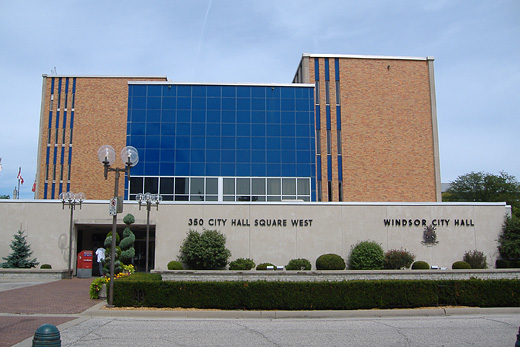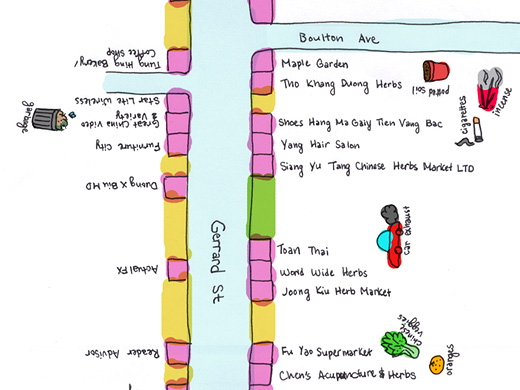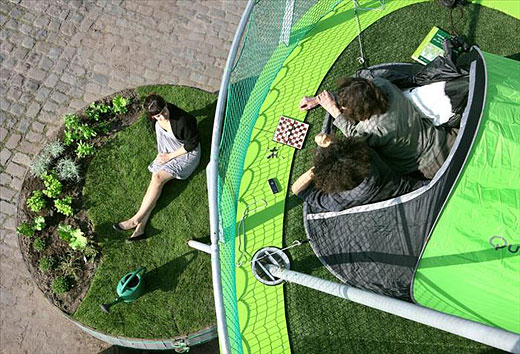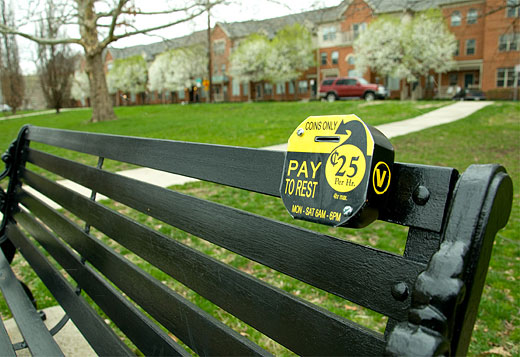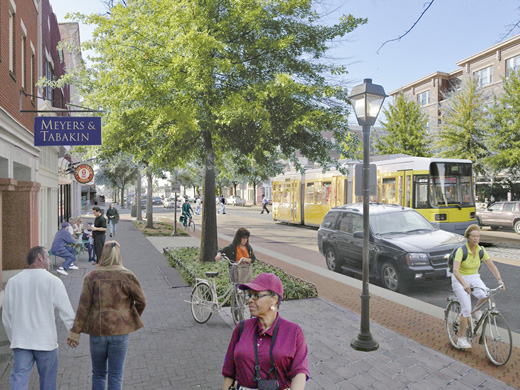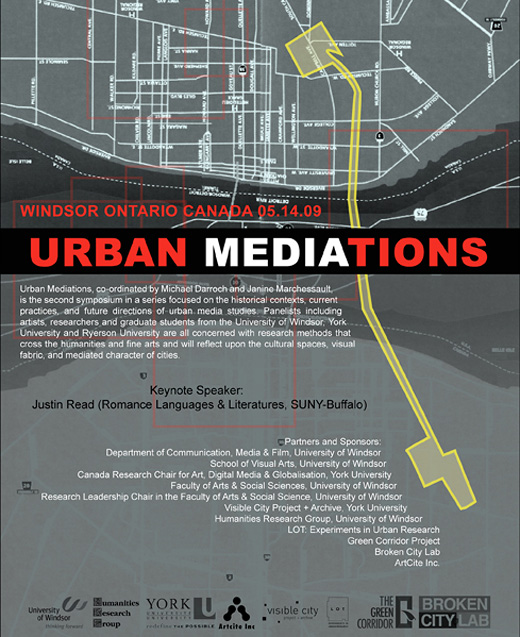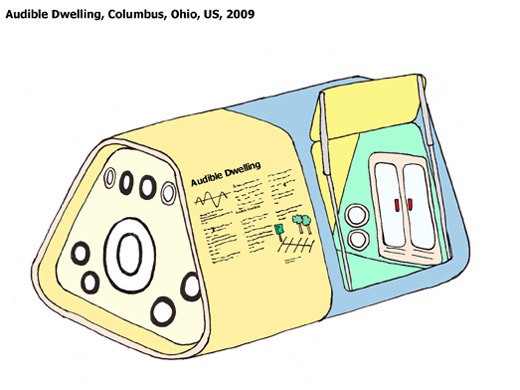
Descent to Revolution, and exhibition / residency created by the Bureau for Open Culture, features five international artist collectives and collaboratives that use urban spaces and social spheres as means of production and inspiration. During the course of the exhibition, participating artists visit Columbus in a series of residencies to make projects specific to the city. The work does not take place inside the space of the gallery but in concert with community and physical mediums outside of it.
Contributing to the exhibition is Claire Fontaine, Learning Site, Red76, REINIGUNGSGESELLSCHAFT, and Tercerunquinto, and all will be working within some relation of the city of Columbus and its community.
Pictured above is Audible Dwelling by Learning Site, a combination loudspeaker and dwelling that responds, in part, to the proliferation of abandoned malls, parking lots, and housing in downtown Columbus. Audible Dwelling is situated in a parking lot on CCAD’s campus. During their dates of residency visitors follow the arrows on the floor out the gallery door to visit Audible Dwelling, to experience it by listening and by leaving a story that is eventually projected into public space via loudspeaker.
Will there by time for a road trip to Columbus???
This project is really exciting to see for a number of reasons, maybe the top one being that it’s nearly exactly what I wish we could do… I wish we had the money to do something as large-scale as this, or even money just to pay for materials for projects we’d like to realize through a program like this. For now though, our Micro-Residency project is getting some great submissions, and hopefully we’ll be kicking it off in the next few weeks, and doing a bunch of amazing things for free.
[via Art&Education mailing list]
